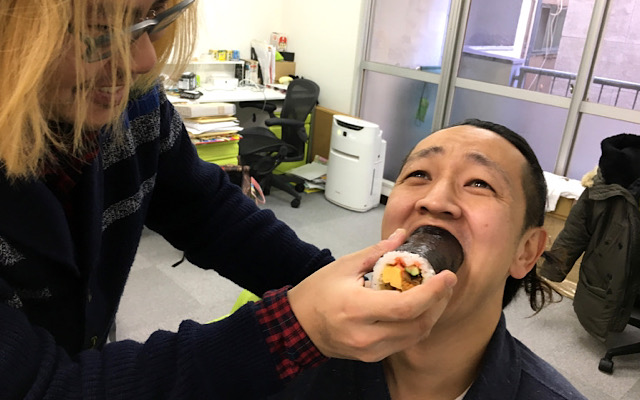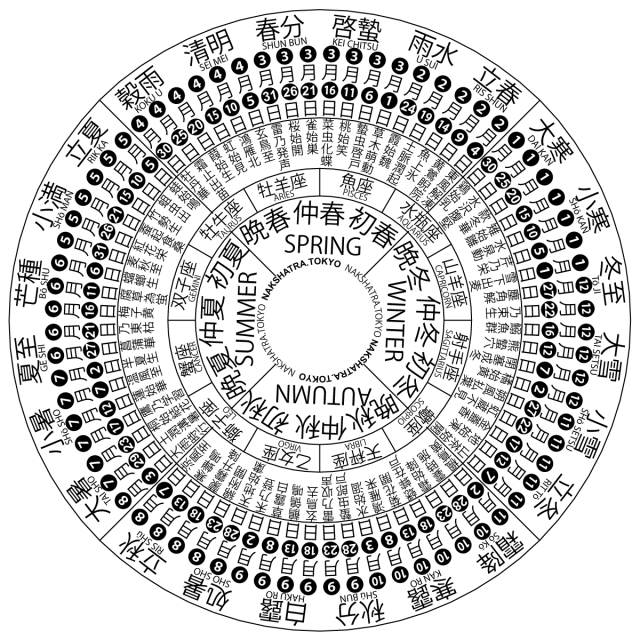Date of Japanese holiday Setsubun changes to 2 February for first time in 124 years

Don’t shove sushi in your friends’ mouths on the wrong day. That would be awkward.
Japan has some very interesting and fun traditional holidays, but the one I’ve always enjoyed the most is Setsubun.
Usually held on 3 February, festivities can vary from region to region, but often involve dressing up like ogres, throwing beans around the house for good luck, and eating a huge-ass sushi roll loaded with awesome stuff.
▼ Here’s some typical Setsubun family fun.
The reason why these things are done it a little complex but I’ll do my best to give a brief overview. “Setsubun” means “seasonal division” in English and is the day before “Risshun” which is known as the first day of spring.
Depending on where you are in the world, 3 February probably doesn’t feel like spring has sprung yet. That’s because the terms “season” and “spring” are loose approximations of the annual divisions based on the lunisolar calendar Japan inherited from China. There are actually 24 “seasons” in this system, which are actually just equal divisions of the solar cycle.
▼ The 24 are written on the outer rim of this diagram, but please memorize the entire thing as it will be on the final exam.
Nevertheless, Setsubun marks the beginning of the “spring” quadrant of that cycle and was seen as a sort of a “new year’s eve” at the time. As such, customs of cleaning out and making a fresh start took place, one of which involved throwing beans to purge homes of bad luck.
This practice also originated in China, but the exact reason isn’t totally clear. It is said that possibly the shape of soy beans was meant to symbolize a demon’s eye. Also, because of their life-giving properties as a staple food, beans may have been seen to posses in inherent life-protecting quality.
It should also be noted that even back then the concept of people getting sick during seasonal changes was common, and the so-called demons at the time may have been representations of colds and flus.
The whole sushi thing came around much later and was just a marketing ploy by merchants in the Kansai area. Only recently has it spread further throughout Japan, because — let’s face it — it’s a really good marketing ploy.
▼ I mean, who can say no to one of these babies?
 SoraNews24
SoraNews24
Even though Setsubun is based on a lunisolar calendar that isn’t in sync with the Gregorian calendar, the holiday is fairly stable. This year marks the first time it’s been moved a day earlier in 124 years. However, it had shifted a day later, to 4 February, a few times throughout the 20th century.
In 2022, it will return to 3 February, but slide back to 2 February in 2025 and every four years from there. Then, in 2057 and 2058 there will be two years in a row with a Setsubun on 2 February. We also won’t see another 4 February Setsubun until the 22nd century, so mark your calendars accordingly.
Speaking of which, this is so confusing that you might find some 2021 calendars in Japan that had mistakenly labeled the wrong day as Setsubun, so the National Astronomical Observatory of Japan would like to remind everyone of the correct day. Failure to do so may result in your home being overrun by demons and worse, missing out on some primo sushi.
▼ We’re talking gilded sushi up in here.
 SoraNews24
SoraNews24
It certainly is a wacky holiday, isn’t it? Perhaps someday, on 2 February Japan will adopt the more sensible practice of waiting for a groundhog to wake up and look at its own shadow in order to predict the weather instead.
Source: NHK News Web via My Game News Flash
Top image: SoraNews24
● Want to hear about SoraNews24’s latest articles as soon as they’re published? Follow us on Facebook and Twitter!
Credit:


0 comments: